BJT design
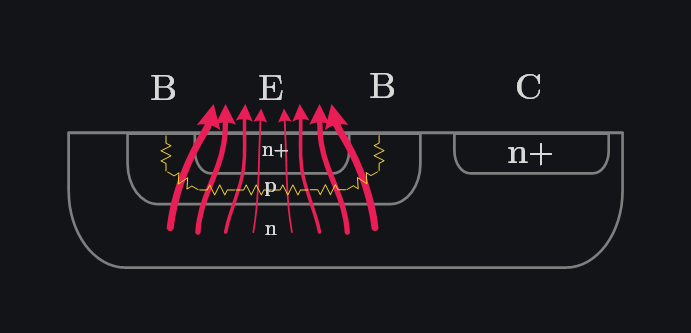
Collect all the minority carriers injected by emitter without getting them lost on the way through recombination. In circuit terms, we call it collector current should be equal to emitter current.
Minimize hole injection from base to emitter and reverse bias currents of B-C junction as they do not contribute to collector current. In circuit terms, we say base current should be zero.
Linearity Improvement Techniques
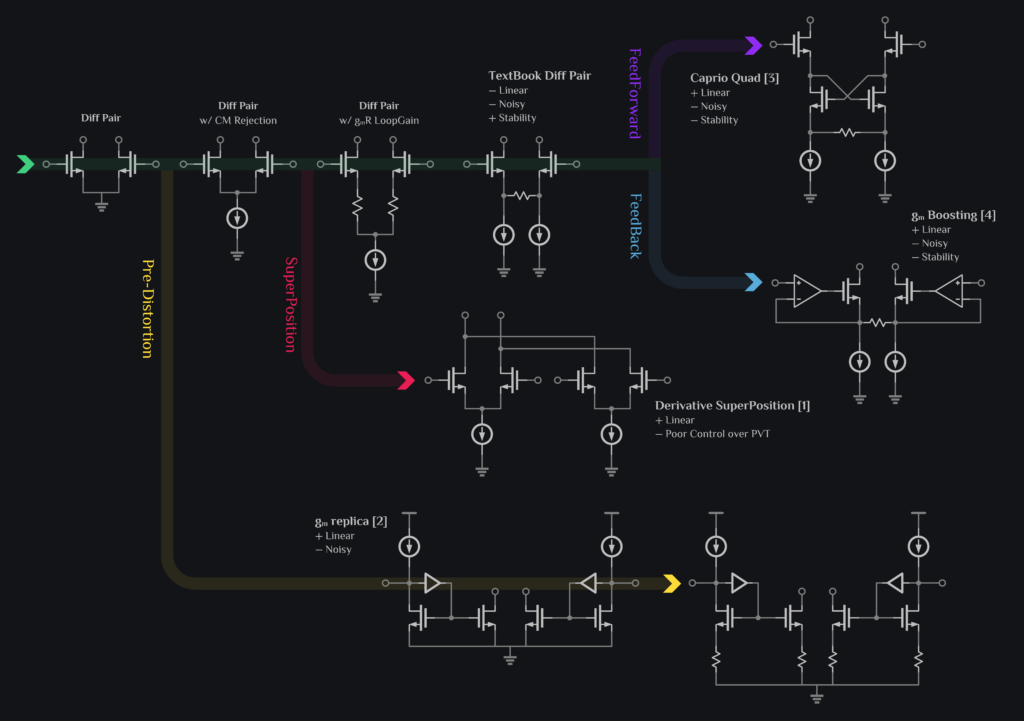
Linearity Improvement Techniques for on-chip Amplifiers The Fantastic Four of Linearity Improvement Techniques Linearity is one of the most, if not THE most, important metric in circuit design. All analog circuits are inherently non-linear mainly because of non-linear behavior of transistors. Many linearity improvement techniques have been discovered or invented in literature yet we only […]
TX EVM Breakdown
TX EVM EVM is one of the key TX design spec. EVM is a measure of signal quality. It is a measure of in-band distortion and noise while ACLR was a measure of out-of-band distortion and noise. Funny enough that since it is in-band, you do not care as much about it as ACLR. If […]
Phase Noise Integration in ACLR
Estimate Noise Contribution in TX ACLR A TX is required to comply with Spectral Mask which basically says you cannot transmit x amount of power outside of your given frequency band. As with everything in life, TX is not ideal and ends up spilling some power in adjacent bands which is measured as ACLR. This […]
Baseband Tones Intermodulation
Intermodulation of Two Baseband Tones This is part 3 in series of two tone intermodulation distortion. When we usually talk about two tone intermods, we mean it for two RF tones for which 2nd harmonics or even order terms fall far away, and we say we only care about IM3 and IM5 because they are close […]
Intermodulation Distortion Analysis
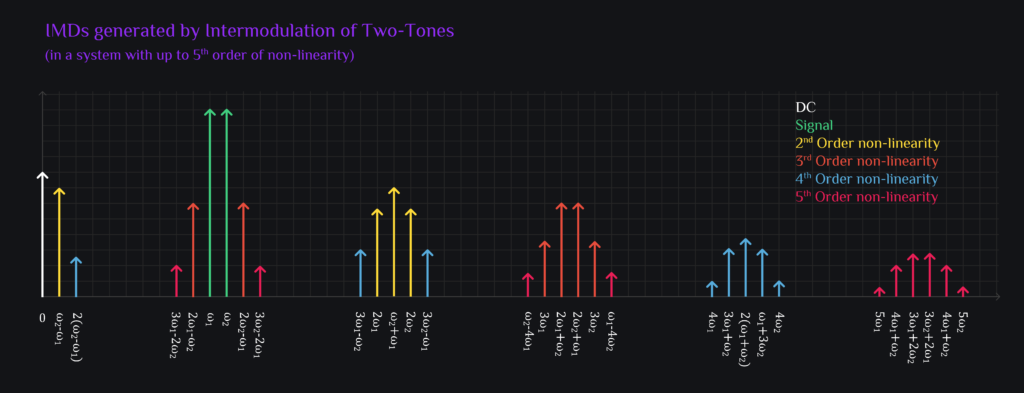
Advance Intermodulation Distortion Analysis This is part 2 in series of two tone intermodulation distortion analysis. Whether you are optimizing linearity or debugging it, you want to understand what are different distortion products, how do they get generated and what are they made of. For example, IM3 is made of odd order non-linearities: 3rd order has […]
TX ACLR Breakdown
TX ACLR TX is one of the most challenging (and rewarding) block in RFIC design, and ACLR is one of the key TX design spec. ACLR is a measure of out-of-band distortion (and noise) that leaks to the neighboring band. While IM3 is a great test for distortion, it leaves a lot to be desired […]
TX IQ Mixer
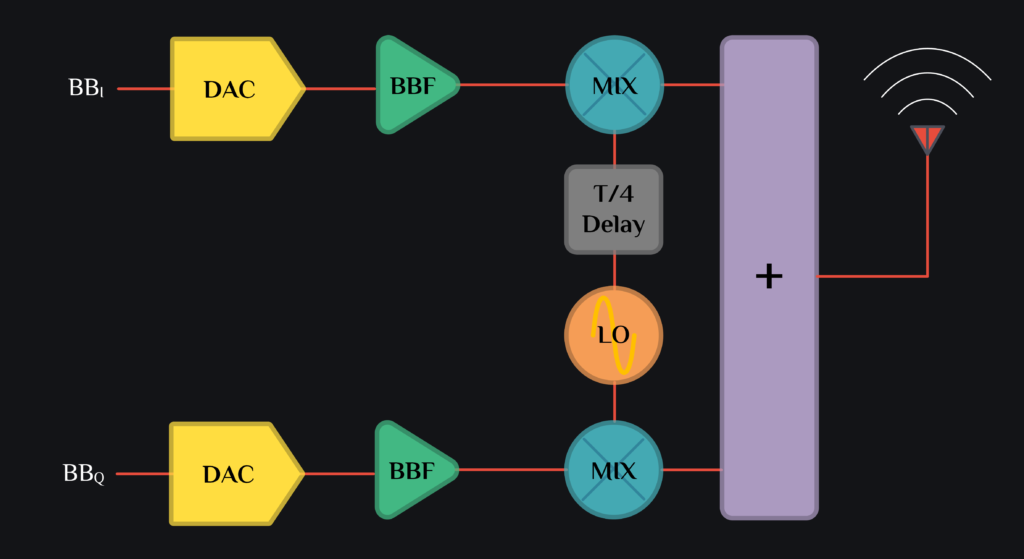
TX IQ Mixer We want to upconvert our baseband signal, (omega_{bb}) , to an RF frequency, (omega_{lo}+omega_{bb}). The easiest and probably the only way alive of doing so is to multiply (omega_{bb}) signal with (omega_{lo}) signal. This works and generates two sidebands, (omega_{lo}+omega_{bb}) & (omega_{lo}-omega_{bb}). But in almost all of the applications today, you just […]
TX HRM Mixer
TX HRM Mixer Your mixer has two frequencies going in, (omega_{bb}) and (omega_{lo}), and you desire only one frequency coming out, (omega_{lo}+omega_{bb}). With the risk of stating the obvious, that is not what happens in real world. Your mixer outputs a lot more trash than you would have ever imagined. Some of it lies far […]
TX Mixer
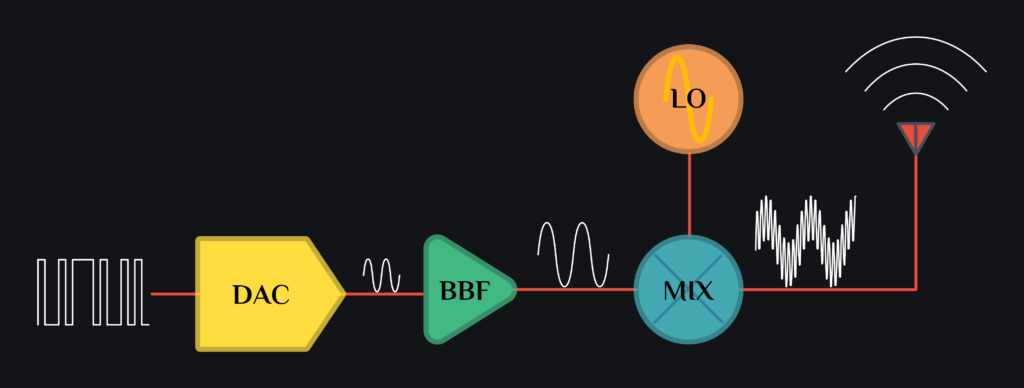
TX Mixer Consider a typical TX with DAC (digital to analog converter), BBF (baseband filter and/or amplifier) and MIX (mixer) as shown in image below. Say DAC outputs a sinusoid signal. Let’s do some math to see what happens to the signal when it makes it to the TX output. $$ DAC,(t): Vcos(omega_{bb},t)$$ This signal […]